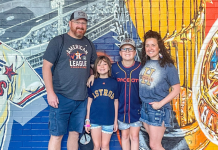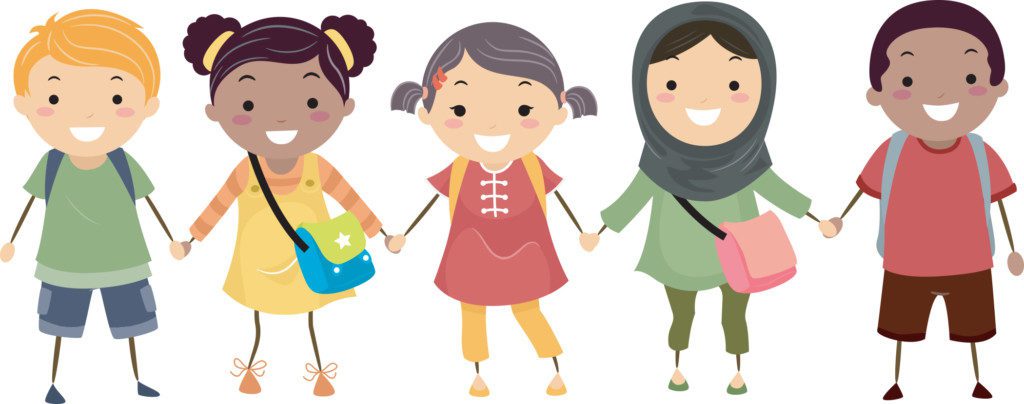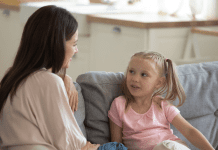For those of us who live here, we already know that Houston is a fantastic city for many reasons. Many outsiders are finally recognizing some of our city’s greatness as they see Houston as the most diverse metropolitan area in the United States. Experts say that over 100 different languages are spoken in our city every day. We have no race majority. The Los Angeles Times described the city of Houston as, “a roadmap to what U.S. cities will look like in the coming decades.” Like Erica mentioned in her article, I love the diverse, inclusive nature of our beautiful city.
Chances are, however, that you do not speak all 100 of those languages spoken. You are probably not an expert on every culture and your expertise may lie with your own skin color/culture/religion/region and stop there. Don’t feel bad! This is not necessarily a bad thing, but it is important to acknowledge, even—and especially—to our children. It is OK to say, “I don’t know.” We are so fortunate to live in a time when we can easily find answers to most questions by accessing a device we typically carry in our pockets or purses. So we can follow our “I don’t know,” statements with a “Let’s find out!”
Most children notice physical differences in people of varying races early in their development. By the age of three, children can verbalize many of these differences and may start to ask questions. Sometimes these questions happen in very public, inopportune moments, so it is important to be prepared in advance so you will be readily armed with the tools you need to best equip your child to be a successful, contributing member of our diverse community. I have four major tips to share with you. Here are the first two to get us started ::
{I am including within this article examples of embarrassing questions that kids often ask regarding race. Please do not misconstrue these examples as jokes about any race. To me, the only thing funny regarding race is the laughable idea that anyone may actually believe that race could make you superior in any way. That is the only race joke I’m laughing at.}
1. Do NOT ignore or silence the question or statement.
Ignoring your child when he asks or observes something about another person’s race does not do anyone any service. Most people will understand that children are curious and may be unfamiliar with people of other races, especially when they are young. They will more readily excuse a child’s behavior if they see a parent who is genuinely educating her child. For example, if a child asks in the middle of a crowded park, “Mom! Why is his skin so dark? Did he drink too much chocolate milk?”
Your gut reaction may be to just shush your child and sink into the floor. I totally get it. We’re all right there with you, sister. This reaction, however, teaches a child that there is something wrong with someone’s skin color. Instead, you can keep your cool and respond openly with something like, “No, honey. His skin is brown because he has something in his skin called melanin. Melanin is very important because it helps protect your skin from the sun. You have melanin in your skin, too. Remember when we went to the beach last month and your skin got tan? It was the melanin in your skin that made it get darker. Everyone has melanin, though some people have more than others.”
Giving a response and explaining a situation in the moment gives our children the tools they need to move forward toward successful adulthood. Showing them that race is nothing to fear or be ashamed of is invaluable.
Brown Is Not Dirty
When I was a little girl, I was perpetually running and playing outside. My knees were always brown. A little girl at school who always wore dresses and looked so polished {her legs were all evenly pale} asked me why my knees were so dirty. I went home and scrubbed my “dirty” knees in the bath for an hour. They still looked the same.
If you are lighter-skinned, moms, be prepared. Many children associate the color brown with dirt, so logically, a question like, “Why is she so dirty?” might arise while in the confines of the grocery store {doesn’t it seem like you end up shopping alongside the same few people the whole time you’re there?}, combined with pointing and embarrassing volume levels. Instead of “Sssh!” and a dash down to the other end of the store, a constructive response might sound like this: “Sweetheart, she isn’t dirty. Her skin is as clean as yours. It’s just a different color. Just like people have different hair colors, we have different skin colors, too.” Keep your cool. Don’t even flinch! If she is still interested, you could go on and explain the melanin thing from the paragraph above. Say it in your regular voice–don’t whisper–especially if other people heard the original question.
Keep in mind that children’s questions don’t go away. They may temporarily go unasked, but if kids don’t get an explanation they’ll come up with one themselves or make assumptions based on what other people say or do. Those assumptions can lead to bigger problems down the road.
2. Make opportunities for “Teaching Moments”
A simple idea for introducing the idea of race to your child comes from Dr. Beverly Daniel Tatum’s book “Why Are All the Black Kids Sitting Together in the Cafeteria?” And Other Conversations About Race I love this book, btw, and highly recommend it to any and all parents and educators}. She says to place a brown egg and a white egg out on your kitchen counter. Ask your child what he sees. Acknowledge that yes, they do have different-colored shells. Then crack each egg into a bowl. You can point out to your child that though they look different on the outside, they are the same inside. Explain that people are like eggs :: we may look different on the outside, but we are all the same inside. If eggs are problematic, you can do similar things with M&Ms–as long as they are all the plain ones! The idea here is to make the “lesson” feel natural, not something you are ashamed or scared of. Kids will notice.
Use Accurate Descriptions
It is alright to talk about people’s characteristics when you describe them. Just don’t limit your description to only race. An example could be “The woman with the purple shirt, dark skin, pushing a stroller.”
Talk About Current Events
When racial injustices hit headlines and news feeds, discuss these topics openly with your child in a way that you think is age appropriate. They are a part of our reality and if we try to shield them from our children completely, they will miss out on opportunities to learn and process this information in context with the world around them from the safety of their own homes.
Speak Up About Seemingly “Harmless” Statements
Recently at dinner my son started talking about some sauce he wanted on his sandwich. His only description was that it “human colored.” I was racking my brain about what the heck he could be talking about while bells and whistles are going off inside my brain. Y’all, he was talking about mayonnaise! I have to share with you that while I am White, my husband is Black and Samoan and my children are all different shades of human, so when he said this to me, I was shocked. But I did take advantage of yet another teaching moment. I explained how there is no “human” color. None of us are actually the color of that mayonnaise {though my legs are embarrassingly too close}! I reminded him that there is no “normal” skin color and hopefully I helped him understand why calling anything “human colored” is wrong.
Teaching about race is not a one-and-done conversation. Our kids will need to hear accurate information on the regular, regardless of their skin color. We can’t sweep the topic under a rug and hope it goes away. We can equip our children, though, so the problems surrounding race get better.




















Great article and advice.